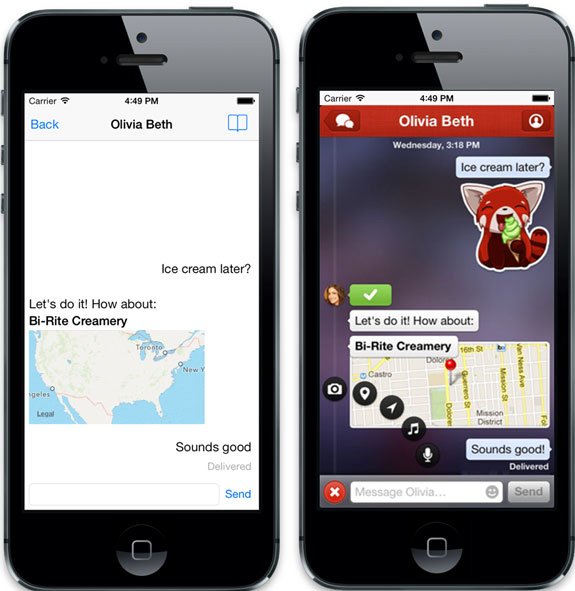Chapter 9. Advanced view customization
This chapter covers
- Going beyond the Interface Builder with custom views
- Creating basic animations
- Using advanced animation techniques
iOS includes a large set of view classes for interacting with the user and displaying all kinds of controls such as buttons, tables, images, and scroll views. But sometimes your app has unique needs that aren’t covered by default views. In an application, we all want the “wow” effect. Throughout this chapter you’ll learn how to achieve it by customizing your views beyond the default properties. You’ll be able to create both basic and advanced animations to enrich user interactions. This chapter will give you the tools to make the difference by creating unique experiences. To illustrate, let’s see what a stunning app like Path would look like without view customizations, as shown in figure 9.1.
Figure 9.1. Difference between what Path would look like using only default views (left) and what Path actually looks like using customized views and effects (right)

In order to learn about animations and customizing views, in this chapter you’ll be creating an app called AnimatedClock, as shown in figure 9.2. AnimatedClock is a fully functioning clock application. You’re going to visually represent time by an animated pendulum and an analog clock with animated clock hands. While creating your app you’ll learn how to customize default iOS views by subclassing the parent class for display objects, the UIView.